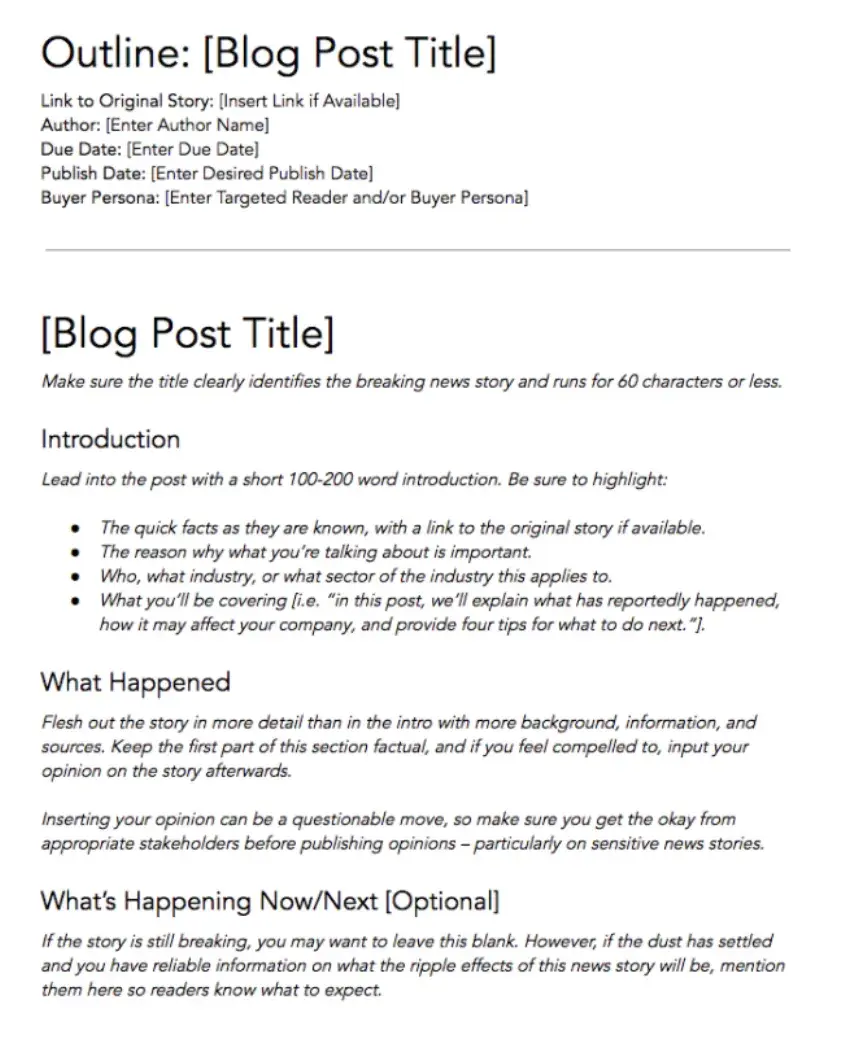How to Write a Blog Post: Ultimate Guide for Beginners

Writing a blog post can seem daunting. But with the right approach, it’s simple.
In today’s digital age, blogs are an essential tool for sharing information, expressing thoughts, and even building a brand. Yet, many struggle with where to begin. Crafting a compelling blog post involves a few key steps. From choosing a captivating topic to structuring your content effectively, each phase plays a crucial role.
Whether you’re a beginner or looking to refine your skills, understanding these steps can make the process smoother and more enjoyable. This guide will walk you through the essentials, helping you create engaging and well-organized blog posts that resonate with your readers. Let’s dive into the world of blogging!

Credit: www.pollycloverwrites.com
Choosing A Topic
Choosing a topic is the first step in writing a blog post. The right topic can attract readers and keep them engaged. It’s important to select a topic that interests you and your audience. Below are some tips to help you choose the perfect topic.
Finding Inspiration
Look around for ideas. You can find inspiration in everyday life. Think about your hobbies, interests, and passions. What do you enjoy talking about? What do you know a lot about? These can be great starting points.
Another way to find inspiration is by reading other blogs. Check out what other writers are discussing. This can spark your creativity and give you new ideas. Don’t copy them, but use them as a springboard for your own unique content.
Researching Trends
Stay updated with current trends. Trends can give you fresh and relevant topics to write about. Use tools like Google Trends to see what people are searching for. This can help you understand what your audience wants to read.
Social media is another great place to research trends. Follow influencers and popular pages in your niche. Observe what gets the most engagement. This can guide you in choosing a topic that resonates with your audience.
Combine your interests with trending topics. This will make your content both personal and relevant. A topic that is both interesting and timely can attract more readers to your blog.
Understanding Your Audience
Understanding your audience is key to writing a successful blog post. Knowing who your readers are shapes how you write. It helps you connect with them. This connection makes them come back for more.
Identifying Your Readers
First, find out who your readers are. Are they young or old? Are they beginners or experts in your topic? Knowing these details helps you write in a way they understand. You can use surveys or social media to gather this information. Look at comments on your previous posts. These can give you clues about your audience. The more you know, the better you can write for them.
Tailoring Content
Once you know your audience, tailor your content to them. Use words they know. Write about topics they care about. If your readers are beginners, explain things simply. If they are experts, go into more detail. This makes your blog post more valuable to them. Use examples that they can relate to. This makes your content more engaging. Always keep your audience in mind. This keeps them interested and engaged.
Crafting A Compelling Title
Creating a blog post is an art. Crafting a compelling title is the first step. A strong title grabs the reader’s attention. It encourages them to click and read more. This section will guide you on how to write such titles.
Using Keywords
Keywords are essential for search engine optimization (SEO). They help your blog appear in search results. Use tools like Google Keyword Planner to find relevant keywords.
- Include primary keywords in the title.
- Use long-tail keywords for specificity.
- Place keywords at the beginning if possible.
For example, if your blog is about baking cakes, a good title could be:
This title includes the keyword “cake baking” and is specific.
Creating Curiosity
Another method is to create curiosity. Make the reader want to know more. Ask a question or make a bold statement.
- Use words like “how”, “why”, “what”.
- Promise to solve a problem.
- Offer a benefit or a solution.
For example, a title like:
“Why Your Cakes Never Rise and How to Fix It“
This title makes the reader curious. They will want to read the blog to find the answer.
In summary, using keywords and creating curiosity can make your titles compelling. Keep them simple and clear. Happy blogging!

Credit: blog.hubspot.com
Structuring Your Blog Post
Structuring your blog post is crucial for engaging your readers. A well-structured post keeps readers interested and helps them understand your message. Let’s explore some key strategies for structuring your blog post effectively.
Introduction Strategies
Start with a strong introduction. Grab your reader’s attention from the beginning. Use a hook, like a question or a bold statement. Clearly state the purpose of your blog post. Give a brief overview of what readers can expect. This sets the stage for the content that follows.
Body Content Organization
Organize the body of your blog post into clear sections. Use subheadings to break up the text. This makes it easier to read and follow. Each section should cover a specific point. Keep paragraphs short and focused. Use bullet points or numbered lists to highlight key information. This helps readers scan the content quickly.
Concluding Effectively
End your blog post with a strong conclusion. Summarize the main points you’ve covered. Reinforce the key message. Encourage readers to take action or reflect on what they’ve read. A clear and compelling conclusion leaves a lasting impression.
Writing Engaging Content
Writing engaging content is essential for any successful blog. Readers are more likely to stay and interact with posts that capture their attention. Here, we will discuss some effective techniques to make your content engaging.
Using A Conversational Tone
A conversational tone makes your writing more relatable. It feels like a friendly chat. This approach helps readers connect with your message. Use simple words and short sentences. Ask questions. Answer them. This keeps the reader engaged.
For example, instead of saying, “One must consider various factors,” you might say, “Have you thought about the different factors?” This makes your content feel more personal.
Incorporating Stories And Examples
Stories and examples make your content more interesting. They help illustrate points and make complex ideas easier to understand. Share personal experiences. Provide real-life examples. This can create a deeper connection with your readers.
Consider this: “I once struggled to write engaging content. Then, I started using simple language and real-life examples. It changed everything. My readers were more engaged.”
By sharing stories, you make your content more relatable and memorable. This keeps readers coming back for more.
Optimizing For Seo
Optimizing your blog post for SEO is crucial to increase visibility on search engines. By using the right techniques, your content will rank higher and attract more visitors. Let’s explore the key strategies to optimize your blog post for SEO.
Using Keywords Strategically
Using keywords strategically is essential for SEO. Start by researching the most relevant keywords for your topic. Use tools like Google Keyword Planner or Ahrefs.
Include your primary keyword in the following places:
- Title
- First paragraph
- Subheadings
- Throughout the content (naturally)
- Meta descriptions
- Image alt texts
Do not overuse keywords. This is known as keyword stuffing. It can harm your SEO efforts. Aim for a keyword density of around 1-2%. This means your keyword should appear once or twice per 100 words.
Optimizing Meta Descriptions
The meta description is a brief summary of your blog post. It appears below your title in search results. A well-written meta description can improve your click-through rate.
Follow these tips to optimize your meta description:
- Include your primary keyword.
- Keep it under 155 characters.
- Make it compelling and clear.
- Describe the benefit of reading your post.
For example:
| Element | Example |
|---|---|
| Primary Keyword | How to Write a Blog Post |
| Meta Description | Learn how to write a blog post that engages readers and ranks well in search engines. Follow these simple tips for success. |
Crafting an effective meta description will make your post stand out. This can drive more traffic to your blog.
Editing And Proofreading
Editing and proofreading are crucial steps in writing a blog post. They ensure your content is clear, error-free, and engaging. This process involves checking for grammatical errors, improving the flow, and ensuring clarity. Let’s dive deeper into these essential aspects.
Checking Grammar And Spelling
Grammar and spelling errors can distract readers and reduce your credibility. Use tools like Grammarly or Hemingway Editor to catch mistakes. Always manually review your work. Automated tools are not perfect. Look for common errors like:
- Incorrect verb tenses
- Misused words
- Misspellings
Pay attention to punctuation. Proper punctuation makes your content easier to read and understand.
Ensuring Clarity And Flow
Clarity and flow make your blog post easy to read. Start by reading your post aloud. This helps you hear how it sounds. Check if sentences and paragraphs connect well. Ensure each idea flows into the next smoothly. Here are some tips to improve clarity and flow:
| Tip | Explanation |
|---|---|
| Use short sentences | They are easier to read and understand. |
| Use transition words | Words like “first,” “next,” and “finally” guide readers. |
| Break up long paragraphs | Long paragraphs can overwhelm readers. |
Finally, ensure your content is concise. Remove any unnecessary words. Each word should serve a purpose.

Credit: ahrefs.com
Promoting Your Blog Post
After crafting a great blog post, the next step is promotion. This ensures your content reaches a wider audience. Effective promotion helps in driving traffic and engagement. Below are strategies to help you promote your blog post effectively.
Sharing On Social Media
Social media platforms are powerful tools for blog promotion. Share your blog post on platforms like Facebook, Twitter, and LinkedIn. Each platform has its unique audience. Tailor your message to fit the platform’s style. Use eye-catching images and engaging captions. This can attract more readers. Schedule your posts at optimal times. This can increase visibility.
Engaging With Your Audience
Engagement is key to building a loyal readership. Respond to comments on your blog post. Show appreciation for feedback. Ask questions to encourage discussion. This makes your audience feel valued. Host Q&A sessions related to your blog topic. This can increase interest and interaction. Use email newsletters to keep your audience informed. Share your latest blog posts and updates. Personalize your emails for better engagement.
Frequently Asked Questions
What Are The Key Steps To Write A Blog Post?
To write a blog post, start with a catchy title. Create an outline, write engaging content, and edit thoroughly.
How Do You Choose A Blog Post Topic?
Choose a blog post topic by researching your audience’s interests. Focus on trending topics and relevant keywords.
What Should Be Included In A Blog Post?
Include an engaging introduction, informative body, and a strong conclusion. Use subheadings, images, and links for better readability.
How Long Should A Blog Post Be?
A blog post should be at least 300 words. However, aim for 1000-2000 words for better SEO and reader engagement.
Conclusion
Writing a blog post may seem challenging, but it becomes easier with practice. Focus on clear, concise content. Engage your readers by addressing their needs and interests. Organize your ideas with headings and subheadings. Use short paragraphs and simple words.
Proofread to avoid errors. Consistency is key, so keep writing regularly. Remember, your unique voice matters. Happy blogging!









